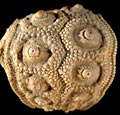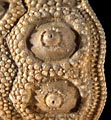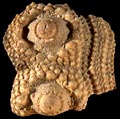The Echinoid Directory
Abelleicidaris Vadet, 1991, p. 109
| Diagnostic Features |
|
|---|---|
| Distribution | Middle Jurassic (Aalenian to Bathonian), western Europe. |
| Name gender | feminine |
| Type | Cidaris bradfordensis Wright, 1857, p. 42, by original designation. |
| Species Included |
|
| Classification and/or Status |
|
| Remarks |
|




